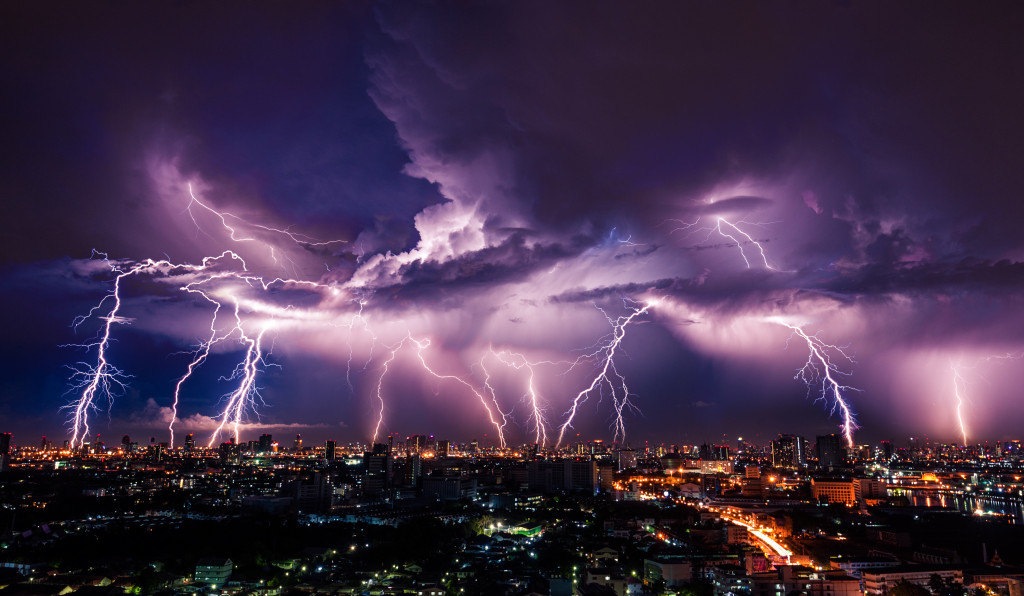Storms are a fairly common event in the United States. But they are becoming more common because of global warming. On average,
As a homeowner, it’s essential to be aware of the dangers that storms pose to your property. High winds, heavy rains, and flying debris can all cause severe damage to your home. Here are five of the most common problems storms can cause for homeowners.
Flooding
One of the most common problems caused by storms is flooding. Heavy rains can quickly fill up drains and low-lying areas with water, resulting in flooding. It can down trees and power lines, blocking roads and preventing emergency vehicles from getting to you. If you’re one of the many people who live in an area at risk for flooding, it’s crucial to have a plan ready to go for if and when that emergency occurs.
Power Outages
Another common problem caused by storms is power outages. High winds can down trees and power lines, resulting in power outages that last for hours or even days. In addition, heavy rains can cause water to seep into electrical equipment, causing it to short circuit. If you lose power during a storm, it’s essential to stay safe using flashlights or battery-powered lanterns rather than candles.
Wind Damage
High winds can cause severe damage to your home, including broken windows and damaged gutters and siding. In addition, high winds can lift shingles off your roof, leaving your home vulnerable to water damage. Your home should be secured before a storm hits your area.

Hail Damage
Hailstones can cause severe damage to your home, mainly if they are large enough. Hailstones have been known to break windows and dent cars. Hail stones are some of the most expensive natural disasters that can hit the country. It causes about
Tornadoes
Tornadoes are one of the most dangerous types of storms that homeowners have to contend with. Tornadoes can lift certain homes outright by lifting their foundations and carrying them away. Tornadoes are devastating because they can wreak damage in a residential area. This is why you should prepare your home for all sorts of storms.
Storms can cause severe damage to your home and property. If you live in an area prone to storms, it’s essential to take steps to protect your property before a storm hits. Here are some of your best options for reducing the amount of damage it can cost to your property.
Have Windbreakers Installed
Windbreakers are an excellent way to protect your property from high winds. They are installed in front of windows and doors and can help reduce the damage caused by flying debris. There are two types of windbreakers, natural and artificial. Here’s what you need to know about them.
Natural
Natural windbreakers are made from materials like wood or bamboo. They are placed in front of windows and doors to protect them from high winds. You can also have hedgerows around your home to protect it from the wind. Natural rock formations or barriers can also work as natural windbreakers and reduce the damage your home can receive from destructive, stormy winds.
Artificial
Artificial windbreakers are those that man can build. One of the most robust artificial windbreakers is
Hire a Professional Roofer
As stated earlier, hailstorms are one of the most destructive natural phenomena. They can cause severe damage to your home, especially if the hailstones are large enough. That’s why it’s essential to have a professional roofer inspect your home before a storm hits. A professional roofer can identify and fix any weak spots on your roof. This will help reduce the amount of damage caused by hailstones.
Trim Trees
Trees can be a great asset to your home. They provide shade and can help increase your property value. However, during a storm, trees can become a liability. If you have large trees on your property, it’s essential to trim them before a storm hits. This will help reduce the amount of damage caused by falling branches.
Take Action
Storms can cause severe damage to your home and property. If you live in an area prone to storms, it’s essential to take steps to protect your property before a storm hits. By following the tips above, you can reduce the amount of damage caused by storms.

